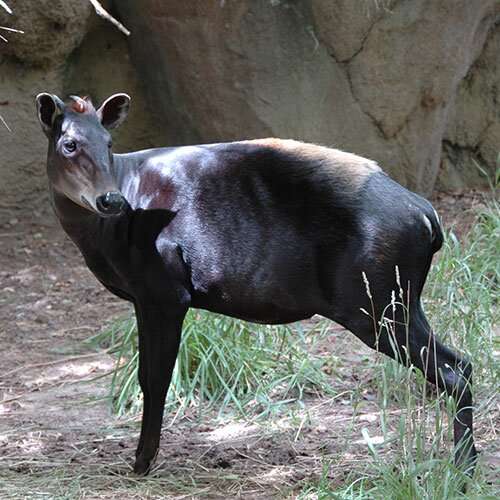New insights on animals in the African past

In order to understand foodways and subsistence strategies of humans in the past, as well as distributions of ancient animal species, it is critical for archaeologists to accurately identify animal taxa in archaeological sites. Many sites across sub-Saharan Africa have fragmented and poorly preserved animal bones, leaving the majority of specimens unidentifiable. Sub-Saharan Africa is also home to the greatest diversity of bovids on Earth, including African buffalo, wildebeest, eland, and duikers, as well as domestic sheep, goat, and cattle. The sheer number of osteologically similar animals in Africa presents a major challenge for identifying animal bones.
During the past decade, archaeologists have increasingly used a bone collagen peptide fingerprinting technique called Zooarchaeology by Mass Spectrometry (ZooMS) to identify ambiguous or unidentifiable bone fragments. However, the lack of complete reference peptide markers for African animals has hindered its application in Africa. In a new study, "Distinguishing African bovids using Zooarchaeology by Mass Spectrometry (ZooMS): New peptide markers and insights into Iron Age economies in Zambia," published in PLOS ONE, researchers present a complete set of confirmed ZooMS peptide markers for all groups of African bovids, revealing new opportunities for archaeologists to identify these species in archaeological sites.
"Our new reference dataset has the potential to revive research interest in, and add value to, assemblages previously considered too poorly preserved for traditional zooarchaeological analysis," said Anneke Janzen, assistant professor in the Department of Anthropology at the University of Tennessee, Knoxville, and lead author on the study.
Using these new peptide markers, Janzen and her team applied the ZooMS method to extremely fragmented animal bone assemblages from six Iron Age archaeological sites in Zambia and discovered the number of species present is greater than expected.

"With this new data, we discovered that Iron Age populations continued to hunt wild bovids, especially small duikers, in addition to relying on cattle-based pastoralism," Janzen said.
"Our research opens new opportunities for addressing questions of paleoenvironment, subsistence strategies, foodways, the spread of and development of herding economies in the African past," Janzen said.
More information: Anneke Janzen et al, Distinguishing African bovids using Zooarchaeology by Mass Spectrometry (ZooMS): New peptide markers and insights into Iron Age economies in Zambia, PLOS ONE (2021). DOI: 10.1371/journal.pone.0251061
Journal information: PLoS ONE
Provided by University of Tennessee at Knoxville





















